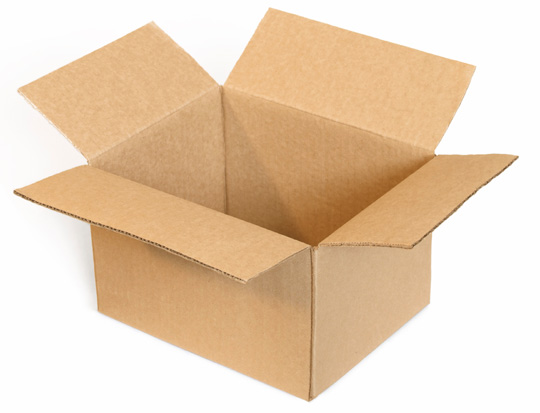 |
||||||||
| June 1, 2016 | ||||||||
| Reduce coater variability with a coater beam replacement |  |
|||||||
|
· Subscribe to Ahead of the Curve · Newsletters · Ahead of the Curve archived issues · Contact the Editor
|
Is more foreign boxboard finding its way into the US market? By Dustin Jalbert, economist, paper packaging The unprecedented growth in global boxboard capacity has understandably generated some concerns about how effectively the marketplace can absorb these volumes in the near term, particularly in a weak global economic environment. China’s aggressive expansion into virgin boxboard has been well in excess of both domestic and even global demand growth for virgin boxboard over the last several years, and now market players await the impact of another salvo of capacity from Europe. The European projects alone will add roughly 1.2 million metric tons of folding boxboard capacity (FBB) capacity through 2017. We have explored these and other global trends in our recent World Boxboard Study. Some observers have questioned how insulated the North American market will be from this new boxboard capacity, particularly given one major European producer’s explicit goal to target North America’s vast folding carton market with 200,000-300,000 metric tons of new FBB volumes. We have our own questions about how successful these efforts will be given that 70-80% of the US folding carton market is backwards integrated with a few very large domestic boxboard producers. The logistics of shipping from Northern Europe to the Midwest, the center of gravity for North America’s processed food and folding carton industry, also poses challenges in terms of lead times and shipping costs. That said, we are closely monitoring the raw customs data as this new FBB capacity hits the market to see how successful European producers will be in penetrating the US market. Specifically, we are tracking US imports of clay-coated multiply board (CMB), which is mainly composed of virgin boxboard grades such as European-style FBB and similar grades like ivoryboard emanating from Asia. These grades generally have outer plies of kraft pulp and inner plies of mechanical pulp, which differ from the “solid” board grades typically produced in the USA, yet still compete in similar end-use markets. Import growth of CMB has advanced over the years despite struggling folding carton demand in the US. In 2015, the US imported just more than of 500,000 metric tons of FBB and similar boxboard varieties; this was up about 50,000 tons compared with 2012 levels. The largest source of CMB imports (~50%) comes from less than a handful of mills in Eastern Canada; this boxboard mostly competes with common US substrates such as solid bleached sulfate (SBS) and coated unbleached kraft (CUK). However, the closure of a mill producing primarily food service board in Quebec during the last half of 2015 caused a sharp downward shift in shipments to the US, somewhere on the order of 5,000 metric tons per month. China has also been a source of boxboard imports, of around 6,000 metric tons per month of CMB. On the surface, Chinese imports seem to have compensated for the loss in imports from Canada at the end of 2015. However, the Chinese data could be tainted by some product misclassifications, making it difficult to interpret purely. Specifically, we suspect the reported CMB volumes probably include some bristol papers, which are heavy basis weight graphic papers used for book covers, index cards, folders and other similar applications. The recent surge in CMB imports from China could be a reflection of this misclassification as some bristol capacity in the US South was in the process of shuttering and reshuffling between the end of 2015 and early 2016, providing an opportunity for Chinese bristol producers to fill the void. On the other hand, it would also not be shocking if greater ivoryboard volumes have pushed their way into the West Coast. Chinese boxboard exporters are desperately trying to find markets for their tonnage as operating rates are painfully low and they have likely taken note of the several boxboard mill closures that have occurred in North America over the last few years. Meanwhile, CMB shipments from the Scandinavian countries, particularly Finland, nearly doubled on average starting in early 2014. Thus, it is fair to say European FBB has actually been increasingly present in the US for some time now, particularly on the East Coast. Market contacts and local producers have also confirmed that more FBB is finding its way into “commodity” segments of the folding carton market. These volumes are likely even more entrenched now given the strength of the US dollar versus the euro over the course of 2015. The full effect from FBB tonnage entering the Northeast is also shrouded by the fact that dollar imports into upstate New York and Vermont have declined in the past year due to the mill closure in Quebec previously mentioned. Surprisingly, West Coast import volumes in dollars have remained subdued, although this probably reflects a couple of things: (1) some boxboard tonnage on the West Coast from Indonesia and South Korea appears to have been displaced by Chinese boxboard over the last several years; and (2) average pricing of Chinese commodity ivoryboard declined by 8-10% between 2014 and 2015, likely lowering the average price per metric ton of paperboard imported into these West Coast ports. A still relatively strong US dollar coupled with virgin boxboard oversupply in the external market probably points to increased presence of foreign virgin boxboard entering the US market in the coming months. But we also suspect that, even with the tailwinds and market pressures experienced by foreign competitors, it will be an uphill battle to take market share from the heavily concentrated and integrated supply base of domestic boxboard producers in the USA. Dustin Jalbert, economist, paper packaging, is the author of several RISI special reports, the most recent of which are the World Boxboard Study and the Trends: 2015 Industry Outlook & Market Data Report for the PPC. He works out of RISI’s Bedford, MA, office and can be reached at djalbert@risi.com. Now that you are Ahead of the Curve, stay there by joining TAPPI.
For a modest investment of $174, receive more than US$ 1000 in benefits in return. |
|||||||
 |
||||||||

